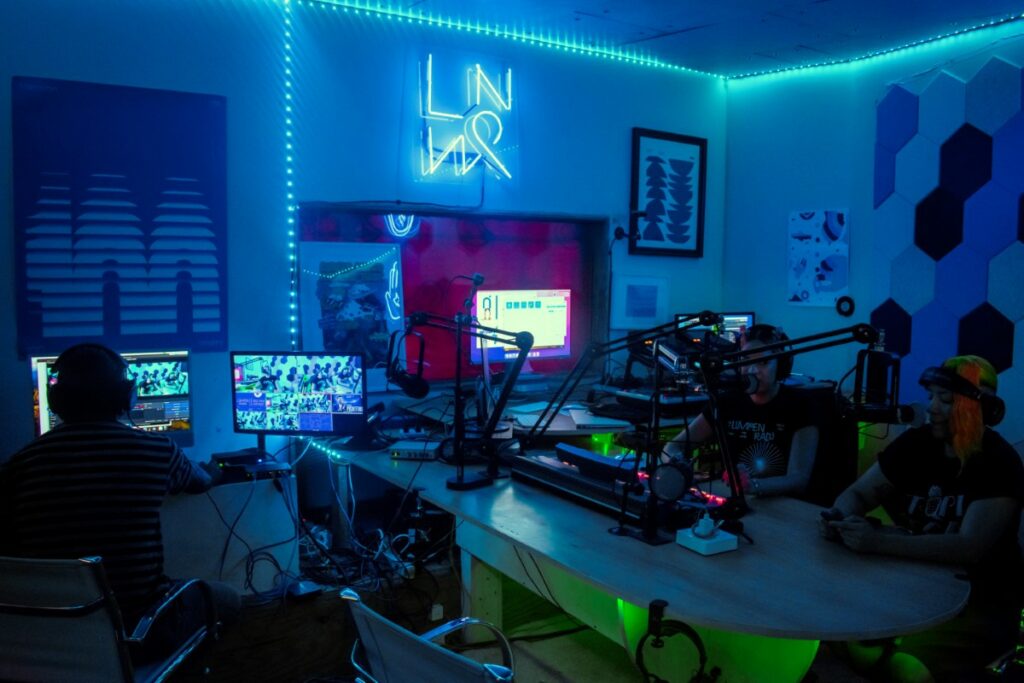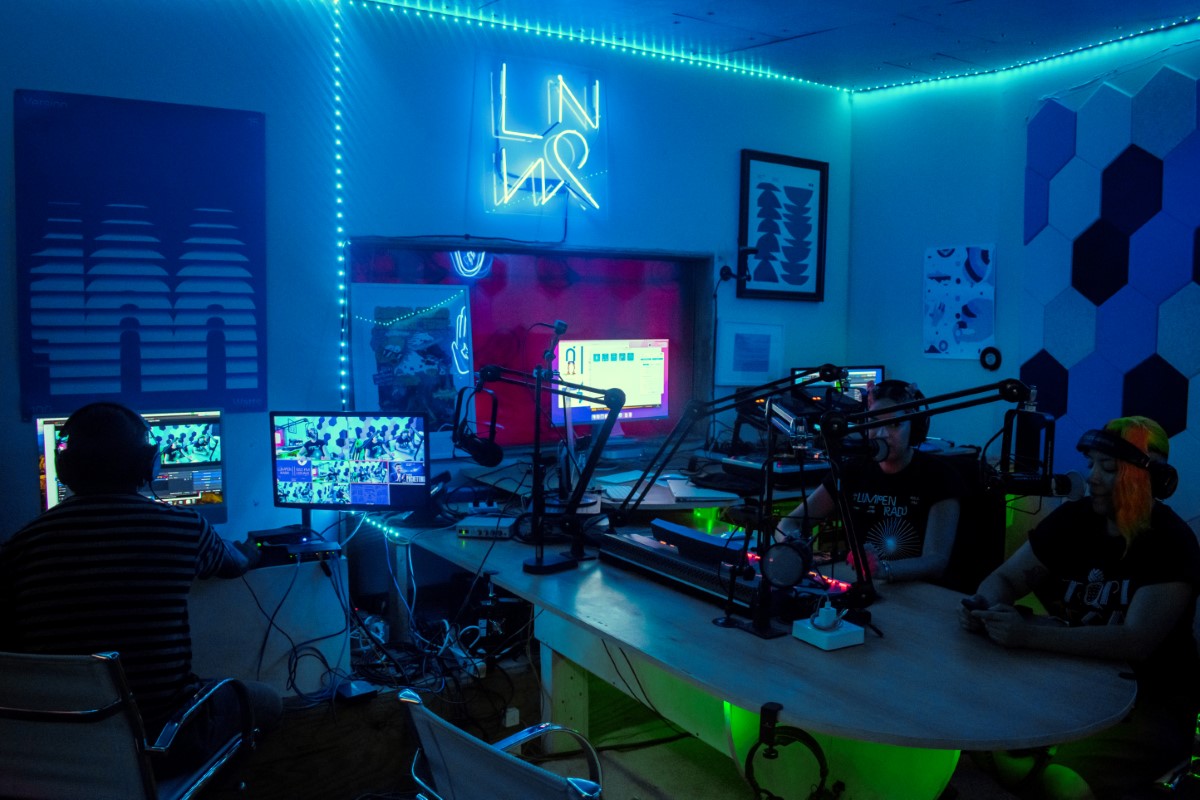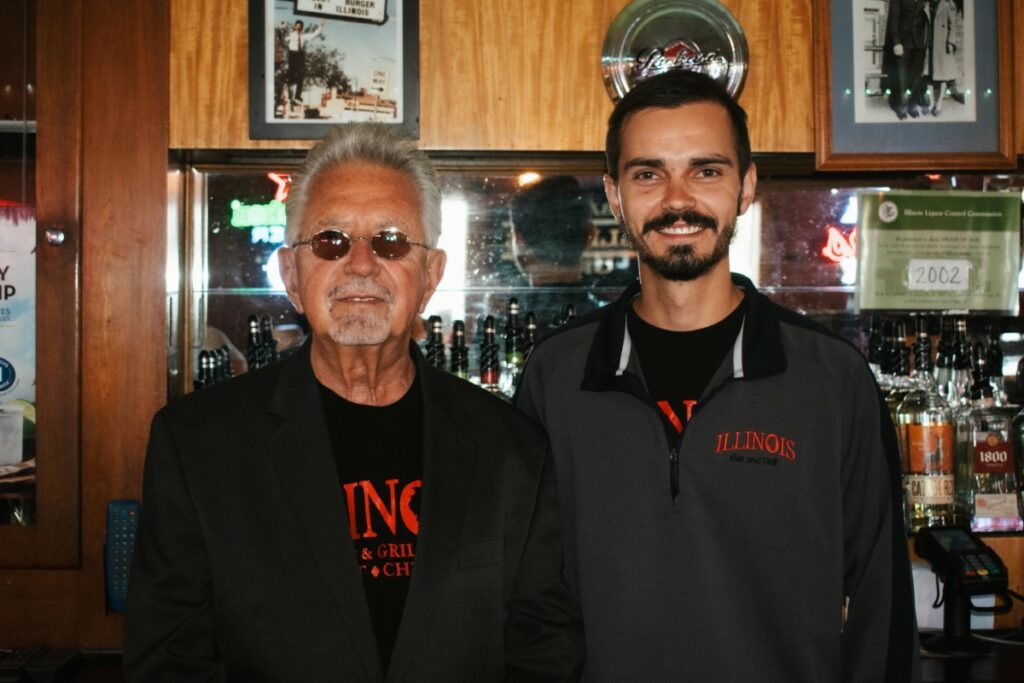I’ve spent thirty-one years on this terrestrial plane, and I’ve spent two-thirds of them in Chicago, my place of birth. And for all of those years in this city, I’ve always lived south of Roosevelt Road—up until a couple months ago, when I moved to Humboldt Park, which, to a young Carlos, was practically the North Side.
I still get plenty of chances to visit my old South Side neighborhoods—six in total, by my count. I moved a lot when I was a kid, including twice to Mexico and back, and each time we returned to a different neighborhood. Our border hopping was mostly due to my dad, an immigrant and high school dropout who worked his way up to overseeing an industrial t-shirt screen printing plant that used to be on Grand Avenue.
In the early 2000s, after the ratification of the North American Free Trade Agreement, the plant’s owner—a brusque Argentinian with a strange sense of humor—went all-in on a maquiladora in Campeche, a city of a quarter-million people on the Gulf of Mexico. The maquiladora went belly up a few years later, so we came back to Chicago. But then another one took its place, and they wanted my dad to run it, so we went back to Campeche, until that one went belly up, too.
Did I mention we lived in San Antonio, Texas, and Santa Fe, New Mexico, right before I started kindergarten?
All that moving around meant I never spent more than three years at the same school until I got to college. In retrospect, the constant moving was surely a pain in the ass for my parents, who were in the late twenties and early thirties, and especially so for my wonderful mother, my only true constant in a sea of change, but not so much for me. I’d like to think part of the reason why was because I always felt like I could back home to the South Side, a sanctuary that afforded my dad and maternal grandparents a fresh start and a place to lay roots. I still feel that way about the South Side, and it pains me to see others—even some of my family members—talk down on new immigrants seeking to make it a sanctuary of their own.
Below I write about four places on the South Side which guided me to where I needed to go, from middle school through my first job in Chicago journalism. I’ll cherish these places—and the people who made them special—forever.
Best Underfunded Public Space to Find Yourselves: Chicago Public Library, Gage Park Branch
As a beefy public school kid in the early 2000s, the immediate area around 55th Street and California Avenue offered some of the things I cared about most: Chinese takeout, gas station snacks, and the video rental store on the corner where my cousins and I would get scratched up DVDs and Xbox games on the weekends. On one of those weekends, I deviated from the plan and walked into the Chicago Public Library’s Gage Park Branch. The library occupies a stout, two-story commercial building on 55th Street, two doors down from what used to be the video rental store.
I was already a certified straight-A nerd by then, but I never read books outside of school, much less go to the library. In fact, no one I knew hung out at the library. But on that day, as corny as it sounds, I distinctly remember feeling like I had arrived somewhere I belonged. The other kids doing their homework on the tables, the stack of football magazines I could take home for free, the librarian who answered all my questions—all of it elicited a sense of comfort and wonder that’s stayed with me since.

In all honesty, I only went back to the Gage Park library maybe once or twice after that first encounter, and we moved to Campeche for the second time soon after. But the library stayed with me—I even worked at my college library as a work-study student, until they asked me not to come back junior year. (If you’re my friend in real life, ask me why and I’ll tell you, maybe.)
Down the line, I would come to understand public libraries as a fundamental building block for any true democracy, and that we should create other types of public spaces that meet the needs of working people, like public bathrooms and laundromats, and of course, public housing.
I recently went back to the Gage Park Branch for the first time in decades, and was disappointed to see that it looked exactly the same as I remembered it. According to the Chicago Public Library’s website, the Gage Park Branch opened in its current location on 55th Street in Dec. 1990, and it looks like it hasn’t been updated since, even though the library’s alderman from its inception until a couple years ago was the almighty Ed Burke, whose ward office stood less than a mile away.
An op-ed from 2021 published in the Weekly relayed a petition signed by more than 2,700 people calling on the city to build a new, bigger library in Gage Park with more Spanish-speaking staff to service the predominantly Mexican neighborhood. I mean, the library is so small that it was unable to reopen for a year and a half due to COVID-19 precautions!
The city has so far failed to act. I hope they soon reconsider.
Gage Park Library, 2807 W. 55th St. Mondays and Wednesdays, 10am–6pm; Tuesdays and Thursdays, 12–8pm; Fridays and Saturdays, 9am–5pm; Sundays, 1–5pm. (312) 747-0032, gagepark@chipublib.org
Best Wooden Booths to Watch the Bears With Your Dad: Illinois Bar and Grill – Archer Heights
In between the first and second stint in Mexico, we lived in a garden unit in Archer Heights, off 48th Street and Karlov Avenue.
I felt very lonely back then. I went to school in Brighton Park, and I didn’t know any other kids in the neighborhood. So, as boys do, I developed a deep relationship with the Chicago Bears. Rooting for Devin Hester, Tommie Harris, Lance Briggs and the rest on Sundays was mandatory, and there was no better place to do it than Illinois Bar & Grill with my dad.
We would demolish a stack of whole chicken wings, him with a beer, me with a Sprite, and do that thing dads and their sons do when they don’t talk and stare at the TV together in total unison. Until one of those Sundays, my dad told me that we would probably be moving back to Mexico—which was great news to me. I missed the friends I had made the first time over, and I was excited to rejoin them at my old Catholic school.
Of course, the Bears would go up and down, and then down, down, down, down… But Illinois Bar & Grill still rocks. Aside from the wings—which are top five in the city as far as I’m concerned—they’ve been doing smash burgers way before TikTok. Their pool table is always busy (a good thing) and they have a random assortment of bar games in the back that make for a pleasant aesthetic experience.
But my favorite place to sit in the joint is on their wooden booths by the front door, where you can get a bird’s eye view of The Regulars and the game on the tube, or whatever cop drama the bartender likes.
Illinois Bar and Grill, 4135 W 47th St. Tuesday–Thursday, 11am–11pm; Fridays, 11am–midnight; Saturdays, noon–midnight; Sundays, 12–10pm; Mondays, 12–9pm. Kitchen closes a few hours early. (773) 847-2525.
Best Dia de la Virgen Celebrations at a Cathedral Designed by a Famous Architect: St. Gabriel Catholic Church – Canaryville
My parents split up after we moved back to Chicago from Mexico for the second time in 2009. My sister and I stayed with my mom, and after living at my aunt’s house in Bridgeport for a few months, we moved into a third-floor apartment in Canaryville off 45th Street and Wallace Avenue.
I left for college in 2012, and my grandma moved into the apartment with my mom and my sister, and I would stay there during winter break. My grandma was a social butterfly and a devout Catholic, and quickly made friends at St. Gabriel Catholic Church across the street.
The 127-year-old church was designed by John Wellborn Root of Burnham and Root, the famous Chicago architecture firm responsible for designing places like the Rookery Building and the since-demolished Masonic Temple in the Loop.
The church is beautiful, and I’m going to let Lee Bey, architecture critic for the Chicago Sun-Times, explain why: “Built for Irish immigrant workers, St. Gabriel has a simplified Romanesque design that emphasizes the edifice’s form and geometry rather than its adornment, giving the century-old church a hint of modernity that is still evident today. Root is said to have based the design on that of a medieval Romanesque church in Toulouse, France.”
Got that?
I wish my grandma was still around so I could try to translate Bey’s analysis into Spanish for her. But she didn’t need to know its architectural merit to know that the church was important—so important, that she organized its first celebrations for Dia de La Virgen de Guadalupe.

If you don’t know, Dia de la Virgen falls on Dec. 12, and it’s a big fucking deal in Mexican Catholic culture. It honors the day that San Juan Diego supposedly saw her apparition some 500 years ago on a hilltop in what today is known as Mexico City, and Mexicans tend to celebrate the date with lots of tamales and recitations of the rosary.
And if you didn’t know, Canaryville isn’t known for Diversity, Equity and Inclusion. There’s a history of unabashed racist violence there—I even saw two Confederate flags fly on people’s porches less than a block from our apartment—and I almost got jumped by white teens while walking home from the bus stop. For as long as we lived there, I don’t remember seeing another non-white family on our block, except for our downstairs neighbors.
By organizing a party for La Virgen in St. Gabriel’s basement—with a mariachi, no less—my grandma created a safe space for the other Latino families in the neighborhood. I didn’t go the first year she organized it (I don’t remember why), but I was there on the second and third time that she did, and I saw the number of attendees double year over year. I was honestly shocked; I had never seen that many Latinos congregated in the same place in that neighborhood. I wondered where they all lived, and regret not interviewing them and writing down my reflections.
After that third year, my grandma ended up moving to the suburbs with my uncle. She was a home health aide and her patients were closer to his house than my mom’s apartment. She kept in touch with some folks from the church, but she never got to organize another basement party there before she died last year. I miss her everyday.
St. Gabriel Catholic Church, 600 W 45th St. Monday–Friday, 9am–2:30pm. See website for mass times. 773-927-6263, nativitystgabriel.org.
Best FM Vibes: Lumpen Radio – Bridgeport
After graduating from college, I returned to the Canaryville apartment without a job. It took dozens of applications before I landed one, but I had to move to New York. I had already lived there for a semester while interning at The Nation magazine, and I was excited to go back. But the job was a bust, and I ended up moving back to Chicago less than a year later, but this time, I came back with a job at the Sun-Times, and instead of moving back in with my mom, I sublet a room on Morgan Street in downtown Bridgeport.
That’s when I was introduced to Lumpen Radio, a community radio station based out of Co-Prosperity Sphere. I don’t remember how I came to learn about Lumpen, but it was probably through my buddy Eric Streichert, a poet, musician, and bartender at Maria’s Packaged Goods and host of the “The Butter Hours,” a two-hour dance music excursion which airs live every third Wednesday on Lumpen.
Eric’s show is a prime example of what makes Lumpen so great: Underground and underappreciated tracks curated by a local artist and transmitted with love for Chicago and beyond, for free. I can’t count how many times I’ve pulled out my phone while driving just to Shazam a song that was playing on the station—a behavior I would never condone and would actually strongly condemn.
And then there’s the whole slew of Lumpen talk shows like Eye 94 and Perceptions of the Real, in which hosts Sarah Conway and Eli Ramirez are joined by a guest who produces a piece of writing live on-air. “Together we will detangle the question of why we make what we make,” the show’s description reads. How cool is that?
The South Side is lucky to have Lumpen, which started out as an online-only station in 2015 with volunteer DJs and producers as part of the Public Media Institute, the brainchild of Bridgeport lord Ed Marszewski. After a $100,000 fundraising campaign that lasted a year and a half—and thanks to some FCC rule changes—Lumpen was finally able to break into FM in 2016.

Lumpen is what’s known as a low-power FM station, “which provides coverage within roughly three to five miles, operating at a power of one hundred watts,” according to a Weekly article about the launch. “By comparison, large commercial radio stations operate between 50,000 and 100,000 watts.”
That explains why, depending on where you tune in, Lumpen’s signal might come in and out. As it nears a decade on the air, Lumpen’s programming has only expanded while still maintaining the station’s weirdo edge and progressive bent. The station is now under the leadership of Stephanie Manriquez, one of the city’s most important media minds whom I have the privilege of knowing personally. Manriquez’s fingerprints are all over the Southwest Side’s vibrant cultural scene and she’s brought more Spanish programming into the mix.
Radio stations like Lumpen are what makes our city special. Every big city around the world has a Lumpen, but only Chicago has Lumpen. So stop playing around and tune into 105.5 FM.
Lumpen Radio, 3219 S. Morgan St. Tune in at 105.5 FM or online at lumpenradio.com.




